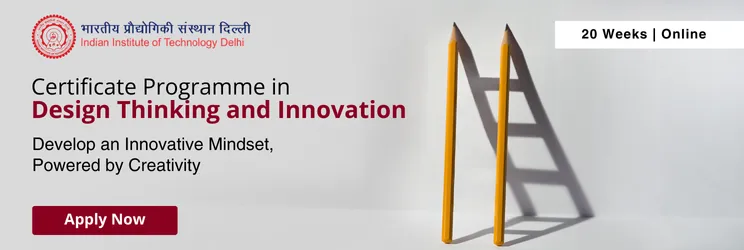5 Types of Research Design – Elements, Needs and Characteristics

Before conducting any research, you must devise a plan to collect and evaluate data, tackle the challenges and reach a conclusion.
A detailed plan will give your research direction, sharpen your research methods and set your study up for success. This detailed plan is referred to as research design in the professional realm.
Research design is a blueprint of a scientific study. It includes research methodologies, tools, and techniques to conduct the research. It helps to identify and address the problem that may rise during the process of research and analysis.
In this article, we will look at different types of research designs.
You’ll also learn the following:
- What is research design?
- Main elements of research design
- Characteristics of research design
What is a Research Design?
A researcher usually chooses the research methodologies and techniques at the start of the research. The document that contains information about the technique, methods and essential details of a project is called a research design.
Experts define research design as the glue that holds the research project together.
It (research design) helps provide a structure and direction to the research, yielding favourable results.
Here are some principles of a sound research design:
- Identifies the problems
- Reviews literature around the problem statement
- Specifies hypothesis
- Describes sources of data
- Defines how data will be interpreted
Best Product Management Courses
What are the characteristics of Research Design
Validity
There are many ways to measure the results of research. A good research design helps select the right measuring tools to gauge results according to the research objective.
Generalised
A good research design draws an outcome that can be applied to a large set of people and is not limited to sample size or the research group.
Neutrality
At the start of every research, a researcher needs to make some assumptions that will be tested during the research.
A proper research design ensures that the assumptions are free of bias and neutral. It also provides that the data collected throughout the research is based on the assumptions made at the beginning of the research.
What are the Main Elements of a Research Design?
Reliability
Research design, when done right, can generate similar results every time it is performed. However, yielding similar results is only possible if your research design is reliable.
Here are some of the elements of a good research design:
- Purpose statement
- Data collection methods
- Techniques of data analysis
- Types of research methodologies
- Challenges of the research
- Prerequisites required for study
- Duration of the research study
- Measurement of analysis
What is the need for Research Design?
- Reduces inaccuracy
- Increases efficiency and reliability
- Eliminates bias and errors
- Minimises wastage of time
- Helpful in testing the hypothesis
- Provides a direction to the research
Important concepts of Research Design
Variable
Variable is a concept that can take on various quantitative values. For instance, weight, height, etc.
Dependent Variable
A dependent variable is a variable that is tested in an experiment. It is dependent, in some way on the variation of an independent variable.
Independent Variable
An independent variable in an experiment is considered to stand on its own. For instance, if the test scores of a class are an outcome of their efforts; efforts are an independent variable, and the score is a dependent variable.
Hypothesis
It is defined as the hypothesis that needs to be tested in an experiment.
What Are the Different Types of Research Design?
A researcher must be well-versed in different types of research design. Moreover, a clear understanding of different research designs helps choose the proper technique for the research.
Research design is broadly divided into quantitative and qualitative research design. We’ll walk you through them in detail below.
Quantitative research design
Quantitative research design aims at finding answers to who, what, where, how, and when through the course of research. Moreover, the outcome of the quantitative analysis is easy to represent in the form of statistics, graphs, charts, and numbers.
Qualitative research design
Qualitative research design focuses on finding answers to how and why. It uses open-ended questions and helps the subjects express their views clearly.
Qualitative research is ideal for businesses that aim to understand customers’ behaviour and requirements.
You can further break the types of research designs into five categories.
Experimental design
This type of research design looks at a problem scientifically by establishing a clear cause and effect of every event. It also tries to understand the impact of the independent variable on the dependable variable.
Often social sciences use it to observe human behaviours and understand the social psychology of human being better.
Correlational design
Correlation research design establishes a relationship between two related variables. The researcher observes the variables over time and then draws conclusions based on them. This type of research design requires two different groups.
A correlation coefficient determines the relationship between two variables. The value of the correlation coefficient ranges between -1 and +1. If the correlation coefficient is +1, it indicates a positive relationship between the two variables, and -1 means a negative relationship.
Descriptive design
Descriptive design is a theory-based research method describing the research’s primary subject matter. This type of research design uses data collection techniques like natural observation, case studies, and surveys to derive results.
This type of research design provides insight into the why and how of research.
Diagnostic design
In diagnostic research, the design strives to explore the reason behind an issue and find solutions to solve it. This type of research design tries to solve the problems in a structured form divided into three phases- the issue’s inception, diagnosis of the issue, and solution for the issue.
Explanatory design
In this research design, the researcher explores concepts and ideas on a subject to explore more theories. The main aim of the research is to explore the subjects’ undiscovered aspects and answer questions like what, how, and why.
Planning to make a career in research and development? Pursue advanced courses in Design Thinking and research from Emeritus India.
We offer certificate courses in partnership with association with prestigious institutes like IIT, IIM, and ISB. Joining our online courses will equip you with the advanced skills and knowledge required to make a successful career in the field.










